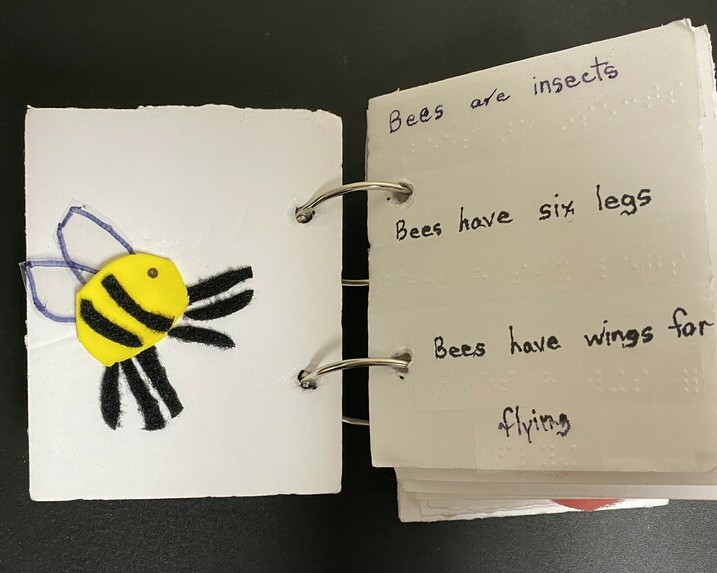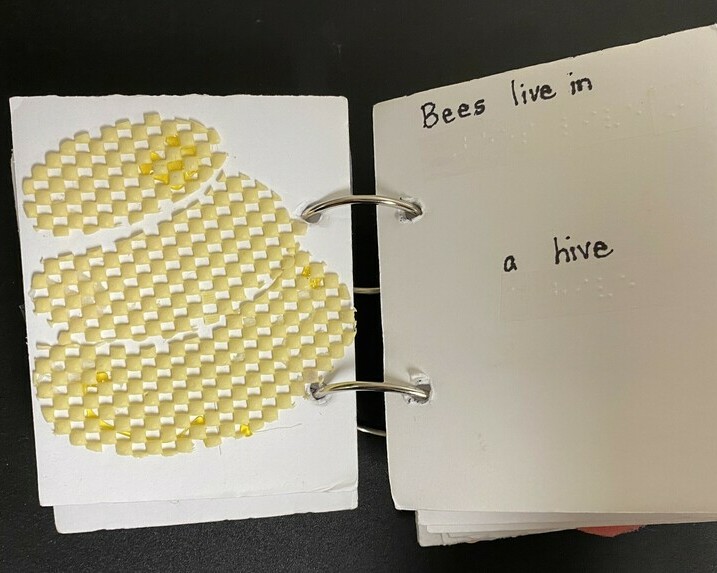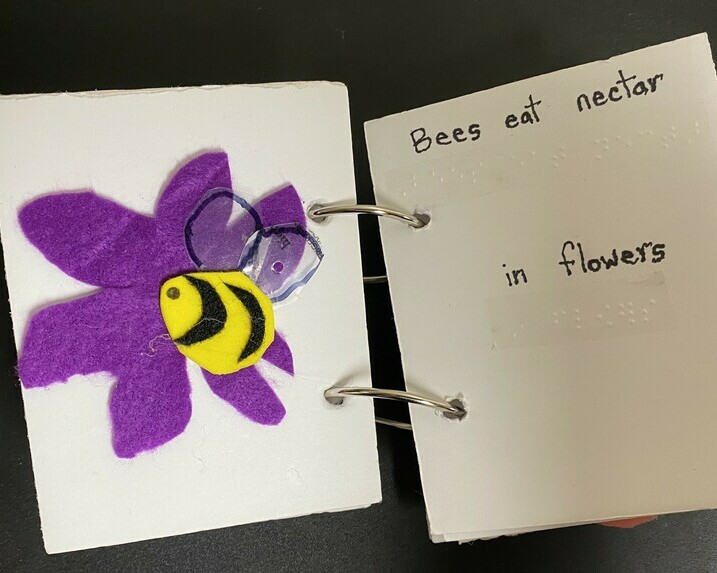
Contribution by Hughy Maguire, Intervenor, SD 33
The student I work with is in grade three. She is blind and has a unilateral hearing loss. Last spring, our class science unit was on biodiversity and the importance of animal species in the world. Each student had to pick and animal or insect and present on why it is important. We stumbled onto the topic for her project because she really enjoys music. We had been singing along to a song on YouTube called “Here is the Beehive.” One day, my student asked if I liked bees and I said, “Yes, I love bees!” I asked her if she liked bees, and she said “Yes!” From there, we started talking about bees, how they are insects, what is an insect, and why are bees important. Other motivating factors included the buzzing sound that the bees make and the rhyming in the song we sang.
To research our topic, we started with books from our Teacher for Students with Visual Impairments (TSVI). We borrowed texture books and story books from her. We borrowed books from the library that I read to my student. On YouTube, we listened to sound of bees in a hive and of one bee going from flower to flower. I even found a bee hand puppet to feel the wings and legs. I had to reassure my student that was only a stuffy and that a real bee is much smaller. We went outside to the small school garden that only had a few flowers – and not many bees. Still, we felt the shape of the flowers the bee would land on, including a snapdragon and a marigold. To get the idea about pollen, we touched flour and felt it stick to our fingers the same way we learned how the pollen sticks to the bees as they take it from flower to flower.
To make the book I chose corrugated plastic for durability and used binder rings to put it together. For each page, we discussed bees and what we wanted to put on the page. For example, how many bees and how many flowers. Together we chose the materials for the flowers (different textures from scraps of materials), and the materials for the bees. I chose the material for the bee’s stripes and wings. When each tactile picture was done, my student and I talked about what she wanted to say about her picture. She helped me braille the words using hand under hand, sometimes helping braille the whole sentence and sometimes just the first two words. It depended how she felt that day. When each page was done, we would read it together.
When it came time to present her project, my student read her book to the class and gave her peers and teacher a taste of honey! (I had bought honey and tasting spoons). My student helped squeeze the honey on the spoon and give it to her classmates.
It took us quite some time to make the book. We aimed to do 1 or 2 pages a week. We both had fun doing it together! I think the important part in making this book was doing it at her pace.
Bee Concept Book
The following images are from the Bee Concept Book.



